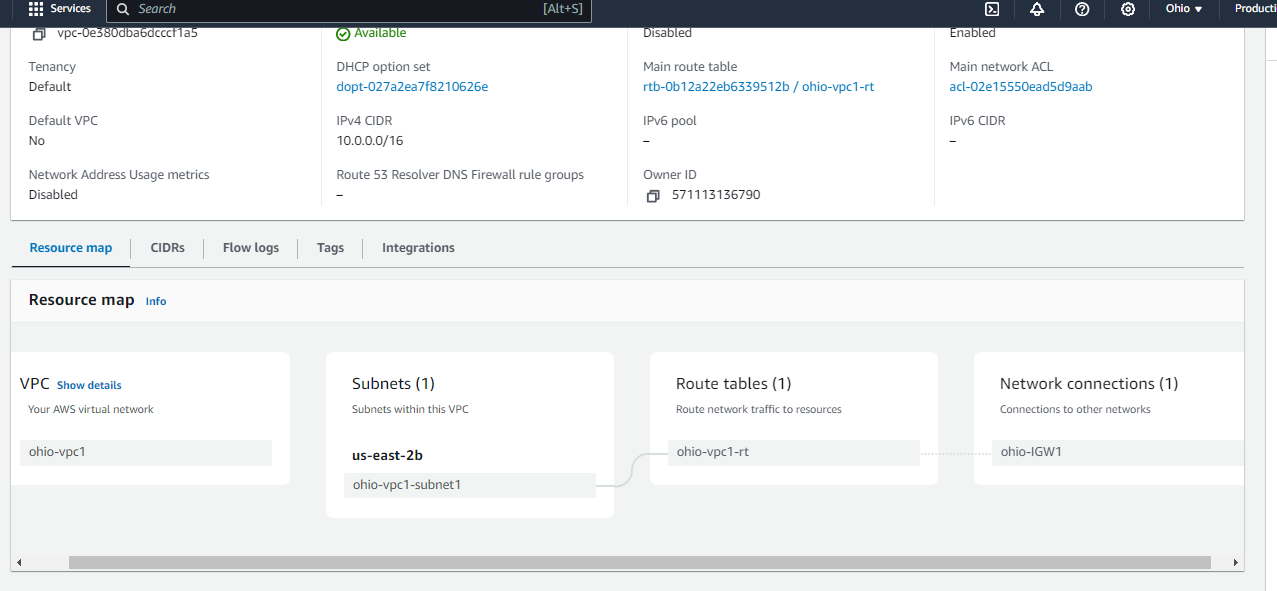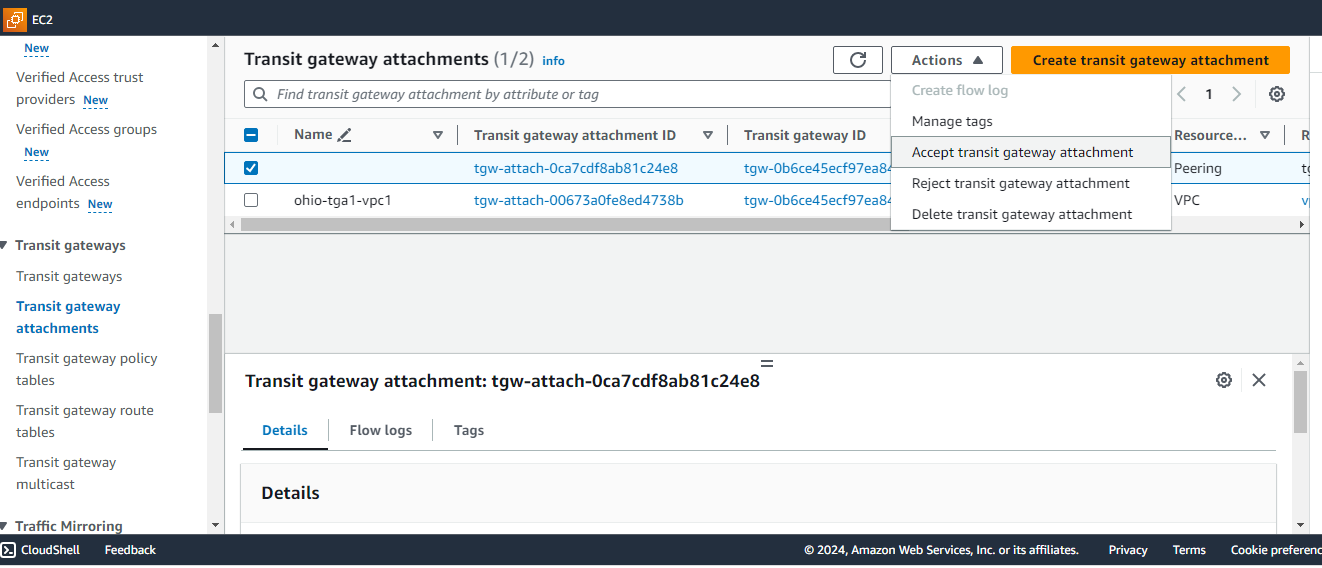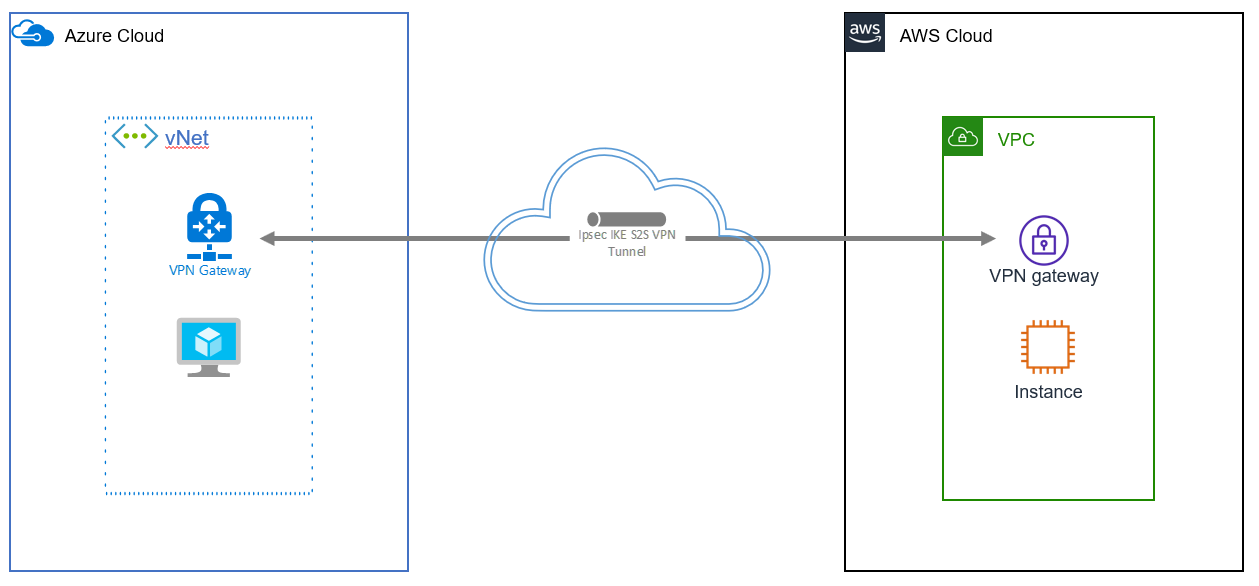🚀Establish a communication mechanism for their instances to communicate seamlessly using the AWS Transit Gateway.
 Neha Adwankar
Neha AdwankarVirtual private cloud (VPC)
A virtual private cloud, or VPC, is a cloud-based network. Like having a separate network inside a bigger network, it enables you to have your own private area of the internet. A variety of resources, including servers, databases, and storage, can be created and managed within this virtual private cloud. You have authority over the network environment when you use a VPC. It is possible to control who has access to your resources and how they can interact by defining access rules, configuring security groups, and installing firewalls.
Subnets
A subnet is a range of IP addresses in your VPC. A subnet must reside in a single availability zone. After you add subnets, you can deploy AWS resources in your VPC.
Internet Gateways
Your VPC and another network are connected via a gateway. To link your VPC to the internet, for instance, utilize an internet gateway. To securely connect to AWS services, use a VPC endpoint rather than a NAT or internet gateway.
Route table
Use route tables to determine where network traffic from your subnet or gateway is directed.
Peering connections
To route traffic between the resources in two VPCs, use a VPC peering connection.
Transit Gateway
With just one gateway, thousands of Amazon VPCs and on-premises networks can be connected via the networking service AWS Transit Gateway. All traffic is routed to and from each VPC or VPN using a hub-and-spoke architecture, and all management and monitoring is done in one location. For hybrid cloud settings as well as within AWS, Amazon Transit Gateway offers effective and adaptable connectivity and routing.
In simpler terms, AWS Gateway is like a central hub that connects your Amazon Virtual Private Clouds (VPCs) and on-premises networks.
The challenge is to establish a communication mechanism for their instances to communicate seamlessly using the AWS Transit Gateway.
Provision VPCs:
Step 1:
Create Two VPCs with name
vpc1 has their CIDR block 10.0.0.0/16
vpc2 has their CIDR block 198.0.1.0/24
Create subnets in their different VPCs.(e.g., Subnet1 , Subnet2)
Provision 2 Internet gateways (e.g., Ohio IGW1, Oregon IGW2) and connect the internet gateways with the VPCs (e.g. Ohio-VPC1-IGW1, Oregon-VPC2-IGW2)
Rename default 2 route tables as Ohio-VPC1-RT1 and Oregon-VPC2-RT2
Change the default route tables to add a route to its IGW.
Ensure that the subnets are associated with V PC's default route tables.
Provision Transit Gateway
Step 2:
Provision Transit Gateways with the name (e.g. Ohio-TG1, Oregon-TG2)
Provide Amazon side Autonomous System Number (ANS): 4200000000
Leave all other settings as default.
After creating both transit gateways with both VPCs as an attachment,
Observe both transit gateway routing tables. VPC's should be propagated.

Provision EC2
Step 3:
Modify the security groups in their different regions to open Inbound port for Telnet, i.e. Port 23
Port 23 should be opened to the CIDR block of the other VPC
(Note: For Ohio-VPC-1, it should be open to the CIDR block of Oregon-VPC2, i.e., 198.0.0.0/16. For Oregon-VPC-2: It should be open to the CIDR
block of Ohio-VPC1.
Create 2 EC2 instances in different regions. (e.g.Ohio-EC2-1 and Oregon-EC2-2)
Note: Any instance should be disabled as a public IP.
Associate it with its security groups.
Create Peering
Step 4:
Add a peering attachment for both different regions.(e.g. Ohio,Oregon)
Note: You will need a Transit Gateway ID for both regions.
While creating peer attachments, change the attachment type form VPC to peering

Accept the peer attachment request
- Step 5:
Go to Transit Gateway attachments and select the accept peer attachment request from Oregon-TG2.
Modify Transit Gateway Route Table
Step 6:
Modify the route tables of BOTH Transit Gateway-
For Oregon:Create a static route for Ohio-VPC-1, i.e. 10.0.0.0/16
For Ohio: Create a static route for Oregon-VPC-2, i.e. 198.0.0.0/16
SSH and TELNET
Step 7:
For SSH:
chmod 400 (keypair file name)
ssh-i (keypair file name) ubuntu@ IPaddress
Commands for Telnet
Step 8:
to check
apt show telnetd
Install Telnet
sudo apt install telnetd -y
Check the Telnet’s Status
$ sudo systemctl status inetd
Configure Firewall for Telnet
$ sudo ufw enable
$ sudo ufw allow 23
Test the Telnet Server
$ telnet 192.168.1.2
To exit
$exit
NOW YOU SHOULD BE ABLE TO TELNET FROM EC2-1 TO EC2-2 VIA TRANSIT GATEWAY PEERING.
#Happy Learning
Kindly feel free to ask any queries in the section below. I'd be pleased to respond to them.
Please follow and use the heart❤❤ button below to express your support if you think this content is helpful 😊.
I appreciate you taking the time to read.
Subscribe to my newsletter
Read articles from Neha Adwankar directly inside your inbox. Subscribe to the newsletter, and don't miss out.
Written by

Neha Adwankar
Neha Adwankar
🚀I aspire to secure a dynamic role as a DevOps engineer, leveraging my strong determination as a software testing expert. I am eager to tackle a challenging position where I can effectively utilize my expertise in deploying DevOps strategies, optimizing operational efficacy, and nurturing cohesive software delivery procedures. Adept in DevOps practices, cloud technologies, and the Software Development Life Cycle (SDLC), encompassing analysis, scripting, testing, automation, documentation, and robust support capabilities.
